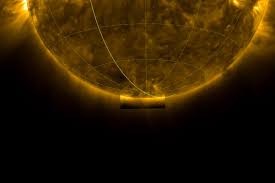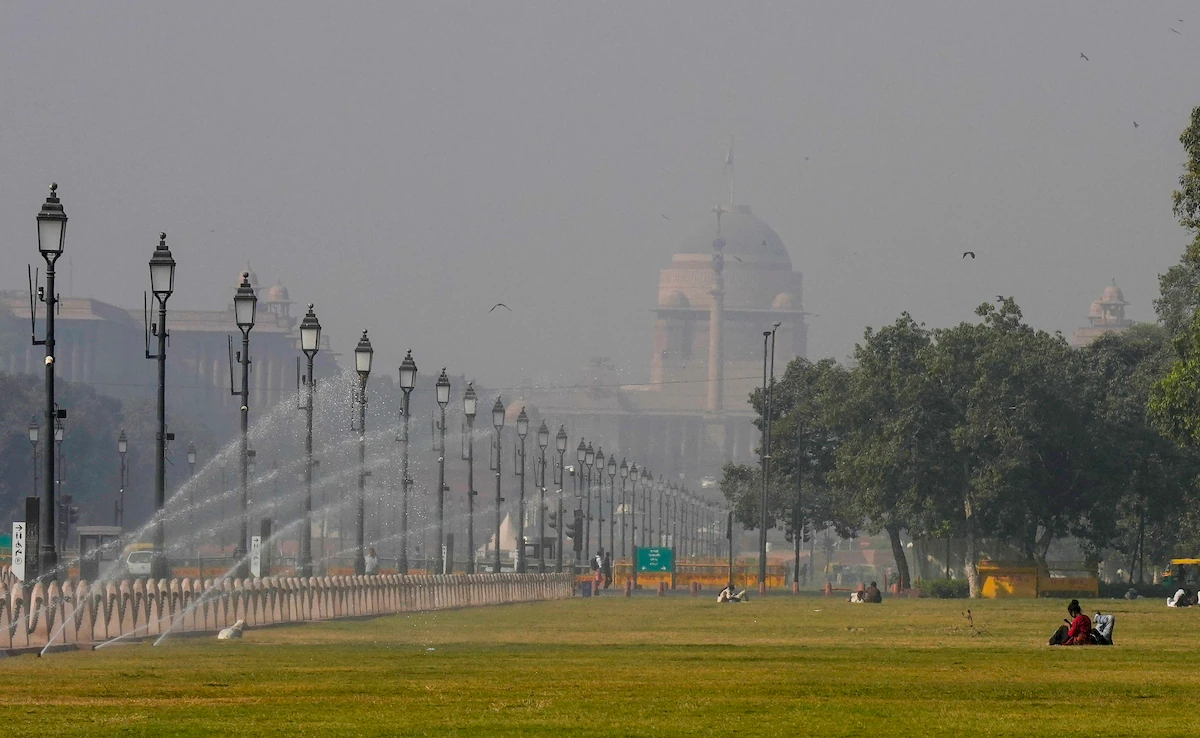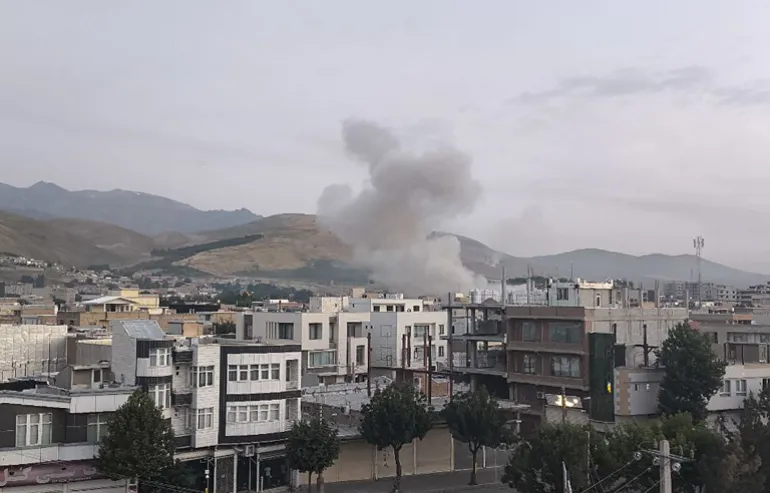- Courses
- GS Full Course 1 Year
- GS Full Course 2 Year
- GS Full Course 3 Year
- GS Full Course Till Selection
- Answer Alpha: Mains 2025 Mentorship
- MEP (Mains Enrichment Programme) Data, Facts
- Essay Target – 150+ Marks
- Online Program
- GS Recorded Course
- NCERT- First Ladder
- Polity
- Geography
- Economy
- Ancient, Medieval and Art & Culture AMAC
- Modern India, Post Independence & World History
- Environment
- Governance
- Science & Technology
- International Relations and Internal Security
- Disaster Management
- Ethics
- Current Affairs
- Indian Society and Social Issue
- CSAT
- 5 LAYERED ARJUNA Mentorship
- Public Administration Optional
- ABOUT US
- OUR TOPPERS
- TEST SERIES
- FREE STUDY MATERIAL
- VIDEOS
- CONTACT US
First-Ever Image of Sun’s South Pole Captured
First-Ever Image of Sun’s South Pole Captured

Why in the News?
- For the first time, scientists have taken direct pictures of the Sun’s poles using a spacecraft called Solar Orbiter.
- This spacecraft is part of a joint mission by the European Space Agency (ESA) and NASA, launched in 2020 to study the Sun closely.
- These new views became possible because the spacecraft tilted its orbit 17 degrees above the Sun’s usual flat path (called the ecliptic plane) with the help of Venus’s gravity in February 2024.
- The first pictures of the Sun’s South Pole, taken in March 2025, were shared with the world in June 2025.
- These pictures show parts of the Sun we have never seen before and open the door to exciting discoveries in solar science.
|
Solar Orbiter Mission:
|
Key Highlights of the News:
- First Polar Views of the Sun:
- The previously invisible areas due to the flat viewing plane of the earlier spacecraft can now be studied with the new viewing angles.
- Revealed chaotic magnetic fields with both polarities (north & south) at the Sun’s south pole, a sign of solar maximum when the magnetic field is about to flip.
- Magnetic Field Flip Explained
- The Sun’s magnetic poles switch every 11 years, this is called the solar cycle. It causes sunspots, solar flares, and coronal mass ejections (CMEs).
- These events can affect Earth by causing communication blackouts, power grid failures, and also create beautiful auroras.
- These new images will help scientists better understand and predict space weather.
- A New Chapter in Solar Science
- Scientists are calling this the beginning of a "new era" in studying the Sun.
- In the coming years, the spacecraft will tilt even more, over 30, to get clearer and closer views of the Sun’s poles.
- Much Better Than Past Missions
- Solar Orbiter not only takes photos but also measures the magnetic field, solar wind, and more, giving us much more useful data.
- North Pole Images Coming Soon
- The spacecraft is still sending back data from the Sun’s North Pole, expected to arrive soon.
- This will help improve our models of the heliosphere, a huge protective bubble created by the Sun’s magnetic field that surrounds our entire solar system.
Key Terms:
|
Implications for India
- Stronger Global Role in Solar Science
- This discovery opens new doors for India and the Indian Space Research Organisation (ISRO) to work more closely with international missions in solar science and data sharing.
- Support for India’s Own Mission (Aditya-L1)
- India’s solar mission Aditya-L1 studies the Sun’s outer layers.
- Data from Aditya-L1 and Solar Orbiter together can give us a better idea of how solar storms affect satellites, communication, and GPS in India.
- Better Disaster Preparedness
- Knowing how the Sun’s activity changes helps India prepare for events like blackouts, GPS failures, or internet disruptions caused by strong solar flares.
- Boost to Science Education
- These missions inspire students and researchers to take an interest in space science, helping grow STEM careers in India.
|
Aditya L1 Mission:
|
Challenges and Way Forward:
|
Challenges |
Way Forward |
|
Data Interpretation Complexity: Understanding the Sun’s magnetic fields at the poles is very difficult. |
Enhance Research and Development: Support more solar science research in Indian universities and institutes. |
|
Space Weather Vulnerability: India relies heavily on technology, which can be affected by solar storms. |
Public Awareness & Policy Preparedness: Create plans and policies to handle solar-triggered blackouts or signal failures. |
|
Resource Constraints: India needs more funding and tools to study the Sun and space weather. |
Strengthen Aditya-L1 Ecosystem: Improve how India uses data from Aditya-L1 and link it with global missions like Solar Orbiter. |
|
Ensure IAS Mains Question: Q. The Solar Orbiter mission’s images of the Sun’s poles mark a major step in solar research. Discuss the significance of this breakthrough and analyse its implications for India’s space research and preparedness against space weather events. (150 words) |
|
Ensure IAS Prelims Question: Q. With reference to the Solar Orbiter mission, consider the following statements:
Which of the statements given above is/are correct?
Answer: c Explanation: Statement 1 is correct: The Solar Orbiter is a space mission led by the European Space Agency (ESA) in collaboration with NASA. ESA built and managed the satellite, while NASA contributed technical support, including launch services. Together, they aim to study the Sun in greater detail. Statement 2 is correct: For the first time, the Solar Orbiter tilted its path out of the Sun’s usual equatorial view and captured direct images of the Sun’s poles, which had never been seen before. This helps scientists better understand the Sun’s magnetic field and solar cycle. |
|
Also Read |
|
| Public Administration Optional | |
| UPSC Monthly Magazine | Question Answer Practice For UPSC |



